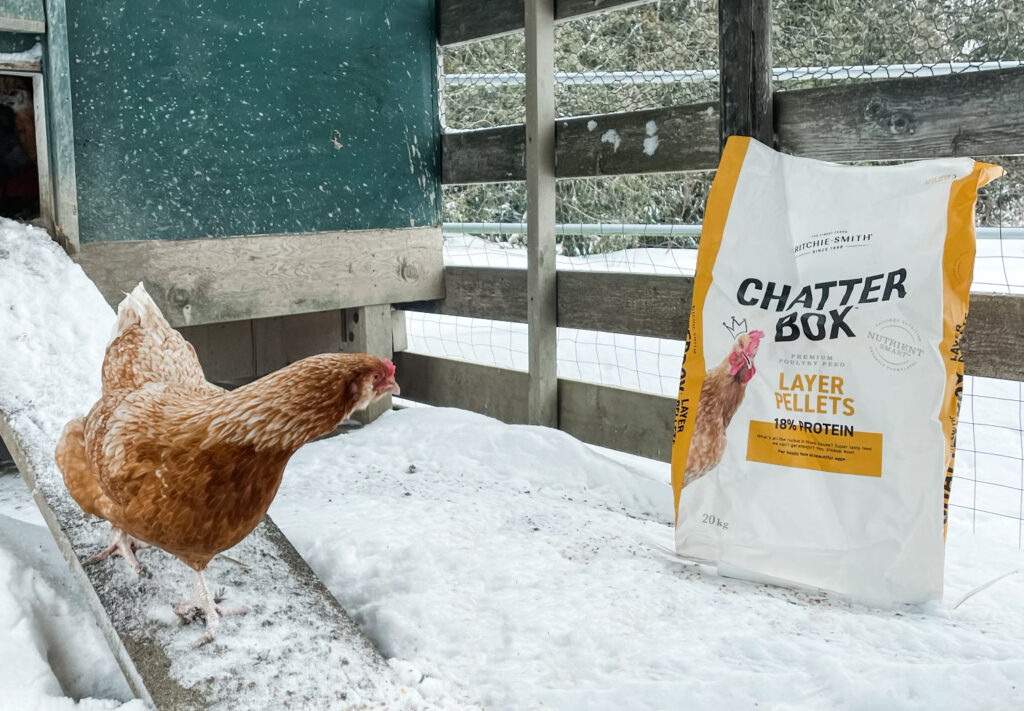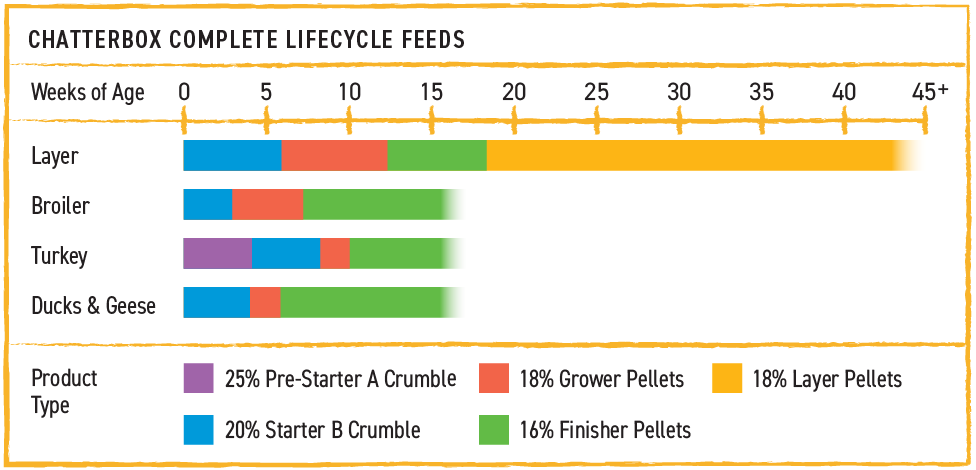
Article
Maximize Egg Laying in Winter
If you have free range chickens through all 4 seasons you will have come to appreciate just how important it is to give them what they need, when they need it.
If you have free range chickens through all 4 seasons you will have come to appreciate just how important it is to give them what they need, when they need it. So, as we head into the winter months we want to take a moment to consider what can be done to keep our birds happy and healthy, and maximize egg laying in the winter months. The seasons often change much faster than we expect, leaving us ill prepared and ill equipped to properly handle the frigid temperatures.
Quick Reference Checklist
Before we get into the details, here’s a quick checklist to refer to when heading into winter months:
- Provide 14-16 hours of light per day
- Maintain a coop temperature of 18-24 degrees Celsius
- Maintain proper air circulation with low ammonia levels
- Ensure consistent access to feed & water
- Choose the right feed
Why Do Hens Stop Laying Eggs in Winter?
Ever wonder why your birds produce less eggs in the winter time? While many assume it’s due to the dropping temperatures, it has much more to do with the lack of light. When a hen goes from 14-16 hours of light per day during summer to only 8-10 hours of light per day in winter, she will experience a drop in hormone production which will dramatically reduce, or even stop her laying. Whenever possible, find ways to add artificial light to your chicken coop so that your birds experience a full 14-16hrs of light per day. If possible, it’s ideal to use dimmers to have the lights fade on and off gently to replicate sunrise and sunset. If using dimmers is not possible, then add the artificial light only at the start of the day rather than the end of the day so that your birds experience a natural sunset and can thus make their way to the roost for the night rather than having a moment when it suddenly goes dark.
Keeping Your Hens Warm
Having a properly insulated barn or coop can help you maintain the ideal range of approximately 18-24 degrees Celsius (65-75 degrees Fahrenheit). Your chosen light sources may also generate some heat to assist with this, but colder stretches you may want to introduce a supplemental heat source. If you add a heater to your coop it’s very important to use caution to avoid potential fire hazards and also pay attention to whether the heater produces CO2. If you’re thinking these steps may not be worth the money, be aware that your birds will eat more to keep their body temperature up, so any money saved by not supplementing heat can be quickly lost in wasted feed.
Ventilating Your Coop
Ventilation seems like an obvious need in the summer, but is sometimes overlooked in the winter. If your chicken coop is mostly closed in, then you will likely require some type of small fan(s) to keep air circulating. Chickens produce carbon dioxide as they exhale so it is very important to keep air moving and continuously pull fresh air in so that levels of CO2 don’t rise too high. Ammonia levels often also climb to unhealthy conditions in winter months if left unchecked. Ammonia can be easily measured using relatively inexpensive test strip kits and should be kept below 25ppm. If you enter your coop and can feel burning in your eyes, your ammonia level is likely well above 25ppm.
Feed & Water Supply
Keeping water and feed readily available to your birds is more than important, it is critical. Anything that produces stress in a chicken can lead to drops in production and disease challenges, so feed and water levels should be monitored closely. If the coop is kept at a reasonable temperature, you should not experience freezing water, but if you use a plumbed in water source you may need to insulate around the water line that feeds into the coop or barn.
Feed Quality
With your birds in a well-ventilated barn, at just the right temperature, with artificial light providing a total of 14-16 hours of light, and a constant supply of clean water, your birds only need one more thing to perform to their maximum potential through the winter- Chatterbox or Ritchie-Smith Layer Feed. Providing high quality and nutritious feed will make a world of difference to improve flock health, egg production and egg quality. And if you opt for Chatterbox, not only will they be enjoying NON-GMO grains from Canadian prairies, you’ll be enjoying eggs that are Omega-3 and Vitamin E enriched.

We’re Here to Help
If you have questions about feeding your flock, our experts are here to help. Email us at hello@ritchiesmith.com and our PhD nutritionists will answer your questions.

Have a Specific Question?
Our dedicated team of expert nutritionists are here to help. Send us your questions.
Ask Our Experts




 Premium Poultry Feed
Premium Poultry Feed
 Premium Equine Feed
Premium Equine Feed
